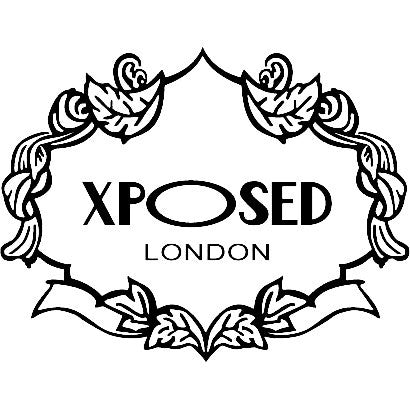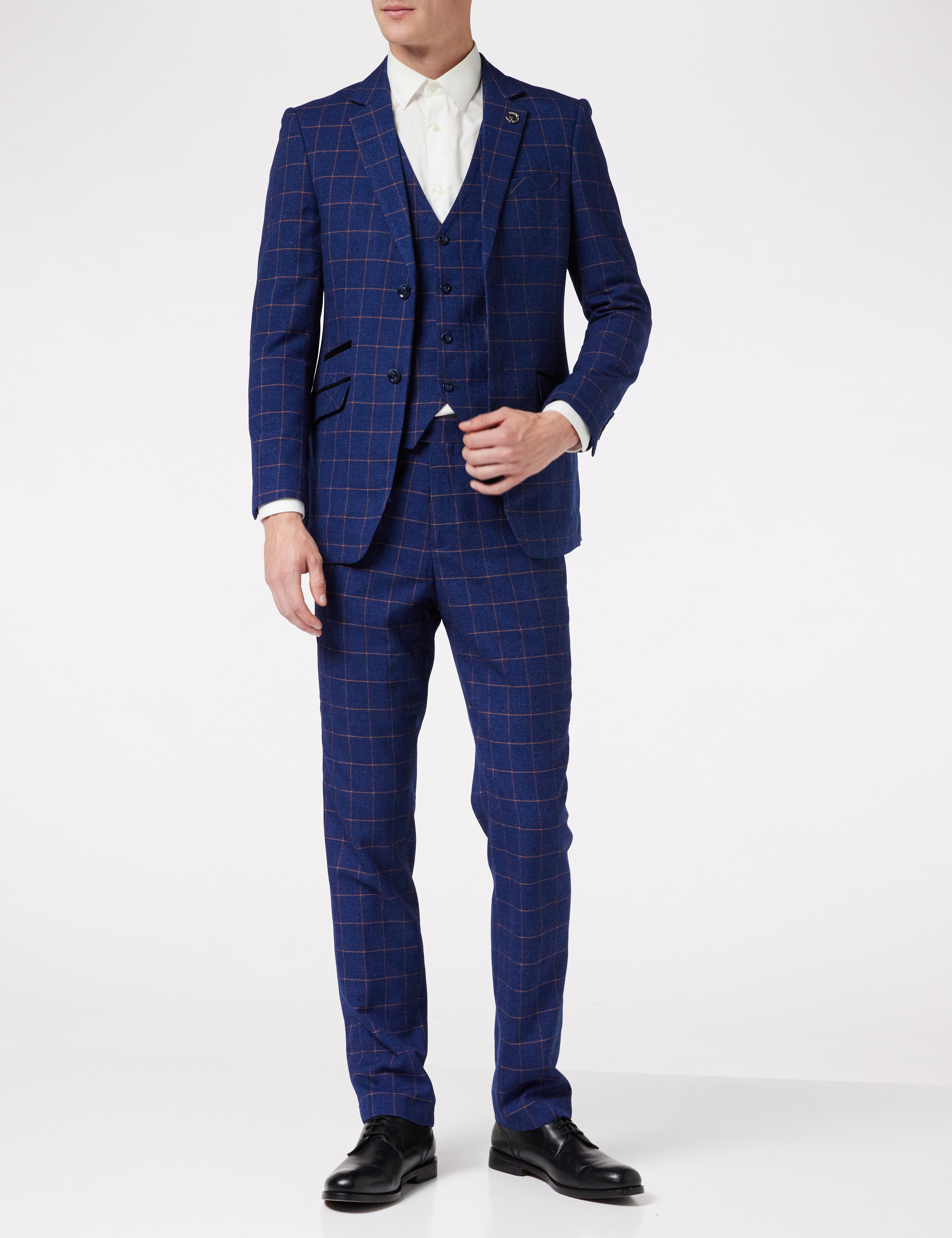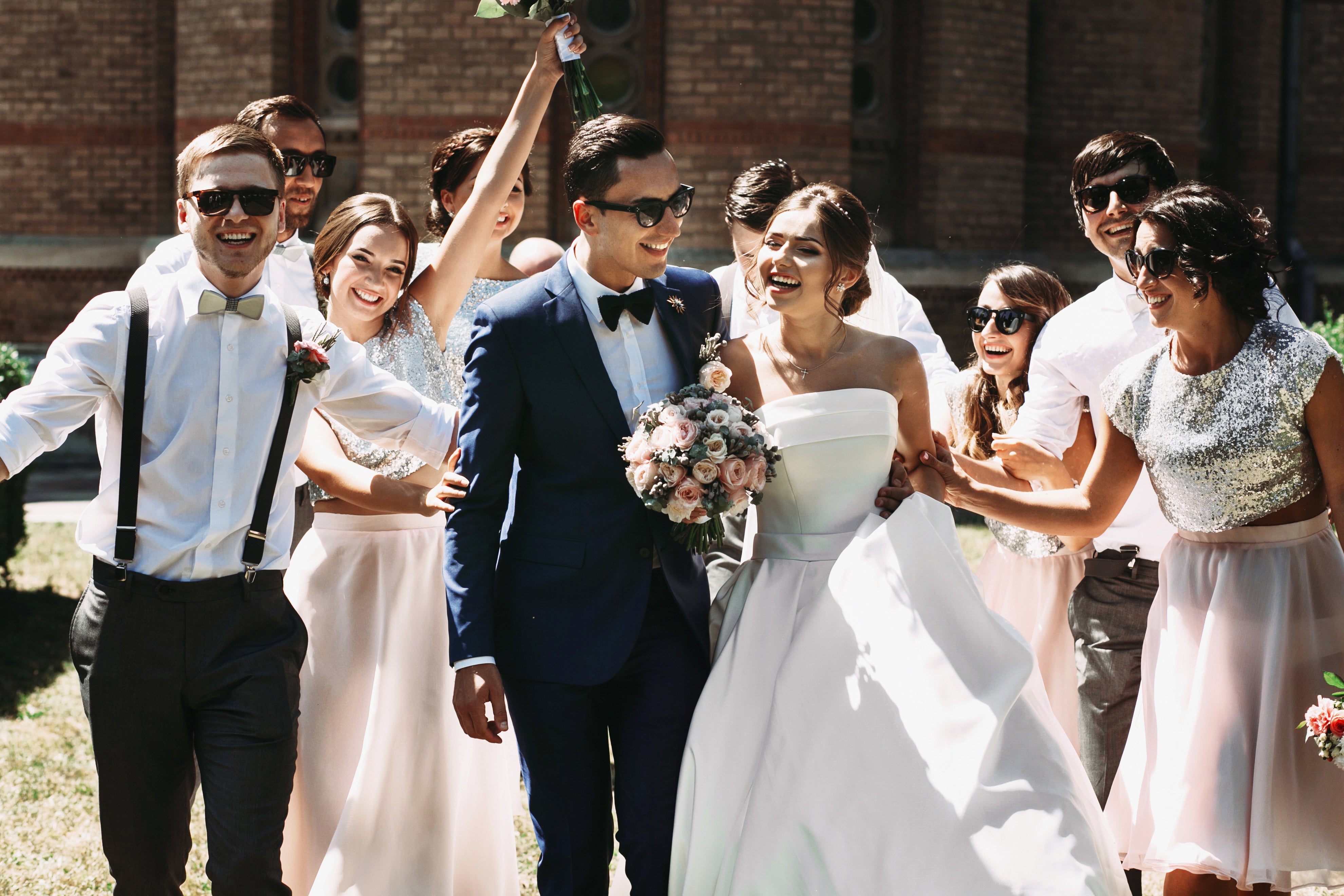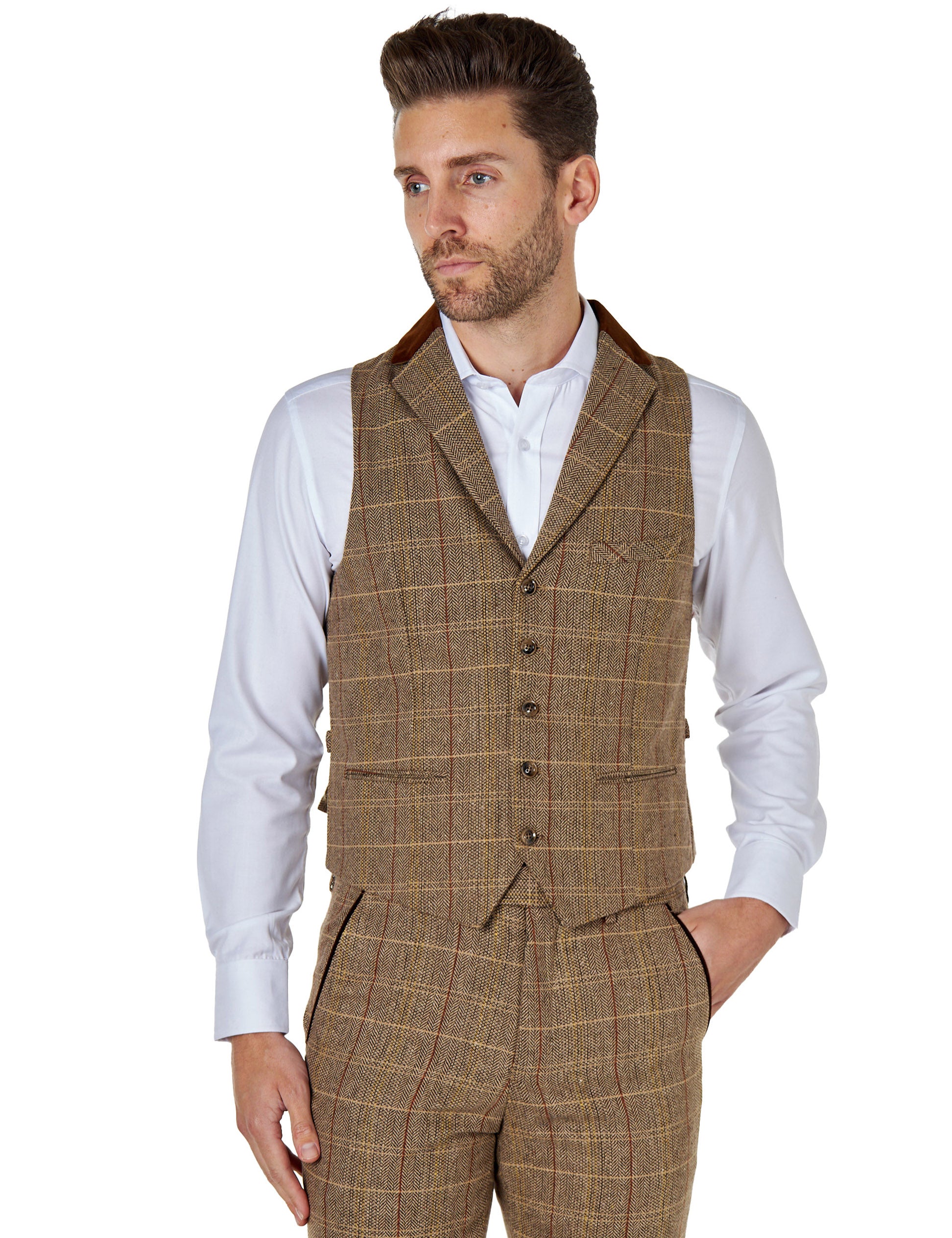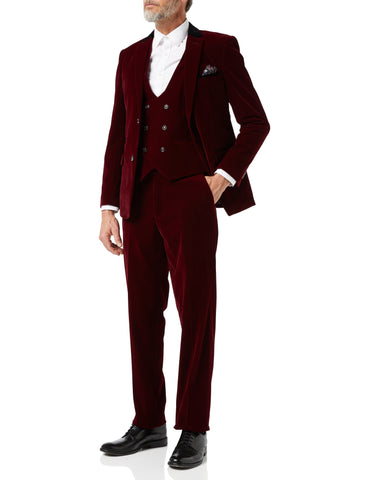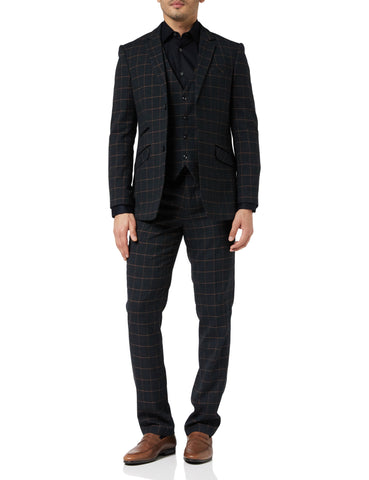Dressing as a Wedding Guest
There’s an unwritten rule (OK, it’s written everywhere) that female guests at a wedding should never try to outdo the bride. It’s pretty well observed, and there’s actually quite a social stigma attached to breaking it. But does the same apply to the groom and his guests?
Generally speaking, we’d say that men have it a little easier than women here. There aren’t too many judgement calls to make because men’s wedding attire is a little less open to interpretation than women’s. Sure, if the groom and his groomsmen are wearing top hats and tails, it would be weird for you to turn up dressed like that as a regular guest. But beyond that, there’s less to worry about. If you do happen to be in one of the main entourages, you’ll probably be having plenty of discussions or instructions as to your outfit, so we won’t be covering that here.
Your biggest clue as to what to wear could actually be written on the invitation. If there’s a dress code, you’re in the clear, as the couple-to-be have done all the hard work for you. The vast majority of weddings for regular folk won’t have a rigid dress code, but it’s always worth checking.
Another pointer is when the wedding will take place. A Saturday afternoon in July will demand a lighter getup than would a Wednesday morning in January. But even then, we’re really talking about layers and more weatherproof footwear as the variables. The overall look should be pretty much the same. And if you’re jetting off to a Caribbean island for the wedding, the dress can be anything from Hawaiian shirts to suits with knee-length shorts. No doubt the couple will let you know if there’s anything special they want you to wear.
So let’s look at the most common coe requests: cocktail, formal, black tie, casual, no dress code specified and the themed weddings.
Cocktail attire at a wedding
A notch above the everyday and a step below formality, cocktail attire signals an invitation to sophistication without eschewing fun. Men should opt for a tailor-made dark suit, paired with a crisp, lighter-coloured dress shirt.
While ties are usually expected, feel free to express a bit of individuality – a splash of colour or a unique pattern can speak volumes. Make sure your shoes are polished; Oxfords or loafers in leather sync well with this look.
Formal weddings
When an invitation requests “formal”, it treads along more traditional lines, precise yet graceful. A high-quality dark suit remains a failsafe choice. However, unlike cocktail attire, the shirt should remain unambiguously white or in very subtle shades.
Ties lean towards conservative designs but ensure they harmonise with your suit’s hue and fabric texture. Leather shoes such as Derbies finalise the ensemble with polish and grace.
Black tie weddings
Entering the realm of a black tie demands sartorial precision – it’s traditional yet far from stale if worn correctly. The centrepiece is a well-fitted black dinner jacket (tuxedo) accompanied by matching trousers.
Wear a pressed white dress shirt underneath, fastened with cufflinks and tucked under a black bowtie, not a long tie. Waistcoats or cummerbunds are optional but add layers of elegance if chosen wisely. Patent leather shoes will ensure an impeccable finish.
Casual weddings
Beware: casual does not invite denim nor does it signal shorts and flip-flops unless it’s a beach affair – it’s still a wedding, after all. Approach this with smart-casual in mind: well-fitted chinos or dress pants coupled with a blazer display your versatility and class. Perhaps you’ve got a suit that you wear for all your weddings. A casual invitation means your outfit is already there in your wardrobe.
Shirt-wise, tasteful patterns or solids are acceptable but keep them well-ironed and tucked. Footwear can be slightly relaxed; loafers or suede shoes complement this aesthetic well.
No dress code
This could be the trickiest to navigate – it accentuates personal style within bounds of decorum. Aim for something akin to business casual: pair dress pants with a blazer of a different colour or material for a contemporary contrast. Again, your regular suit will be fine too, but if you can get any clues beforehand, try and gauge the general look based on the location, the season and the type of couple you’re dealing with.
A tie is optional; if you do opt to wear one, lean towards subtlety. Your shoe choice can vary here, but make sure it aligns with the overall sophistication of your outfit.
Themed wedding
One reason to check the dress code is that there might actually be a specific theme. It’s often based on the tastes or back-story of the couple, but it can be anything, really – just pure fun. You might have to dress as a 1920s gangster, a 1943 US bomber pilot, a Jedi knight … anything, really. Good luck finding the costume!
Let your personality and affection rule
Whatever the dress code, remember, the way you comport yourself completes your attire – wearing clothes with confidence is as vital as their fabric and fit. Also, attention to grooming never goes unnoticed: a clean shave or neatly-trimmed beard, along with styled hair, elevate your demeanour.
Deferring to the dress code signals respect for the couple’s special day while offering you a way to exhibit your finesse and personality. There’s a fine line between looking great and overstepping the mark, but stick to this guide, along with any dress code, and you’ll be good to go. Here’s to a wedding season where you’ll be remembered for all the right reasons.
